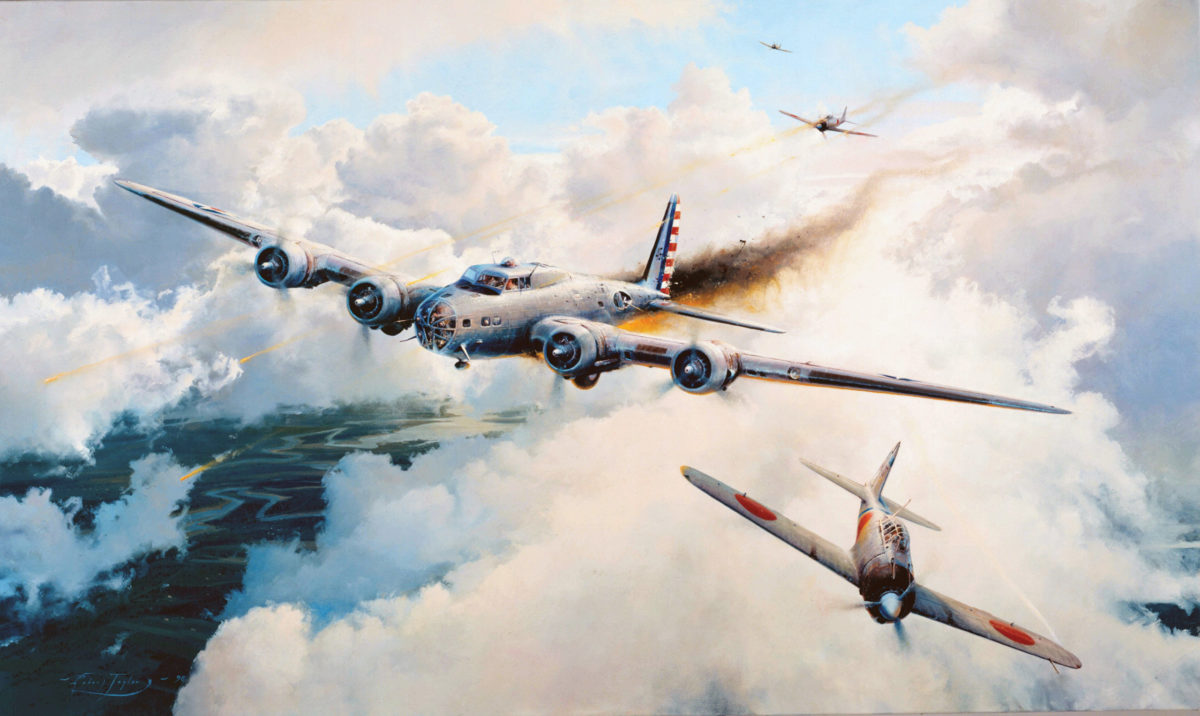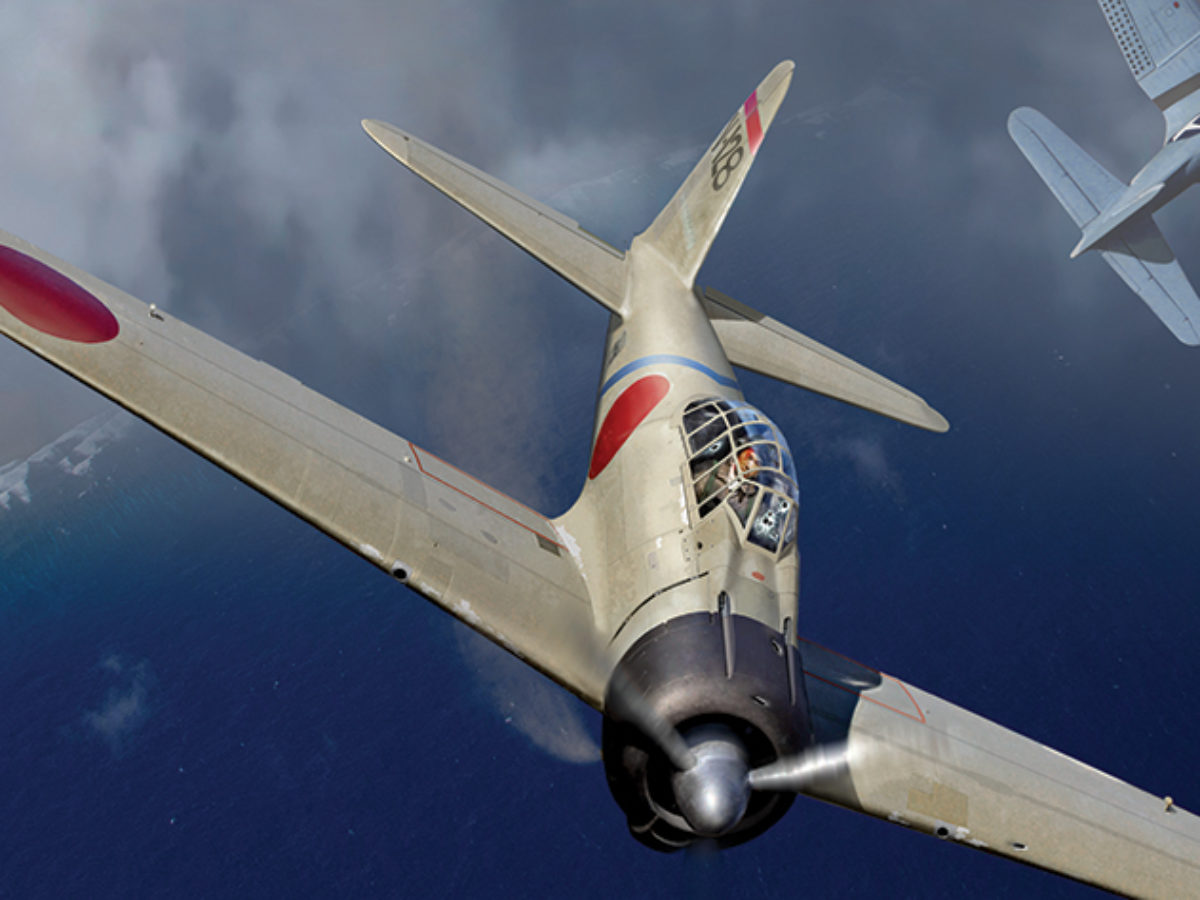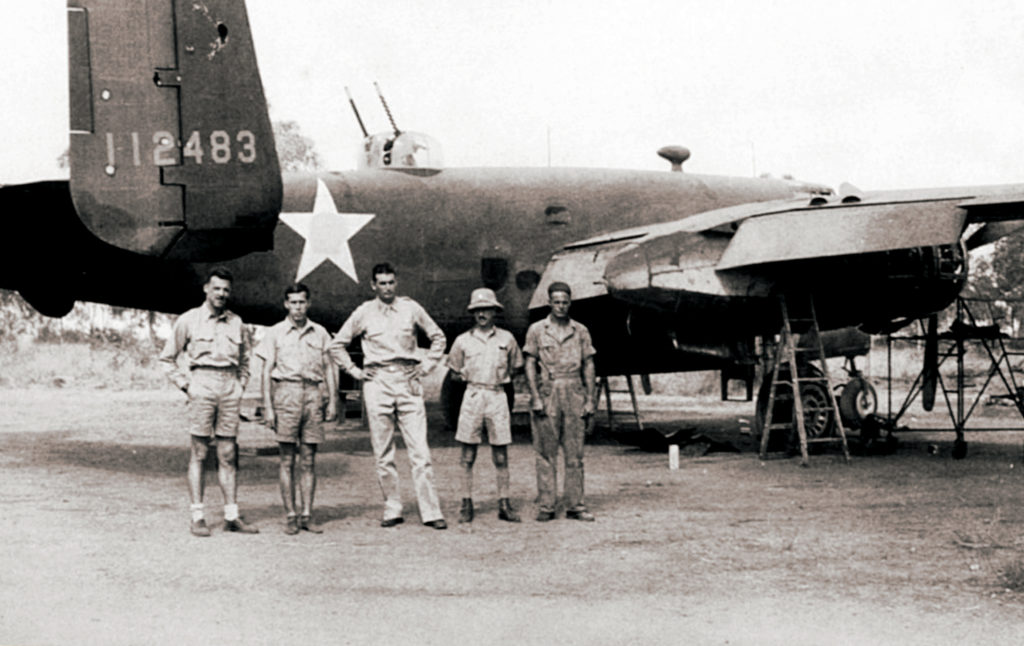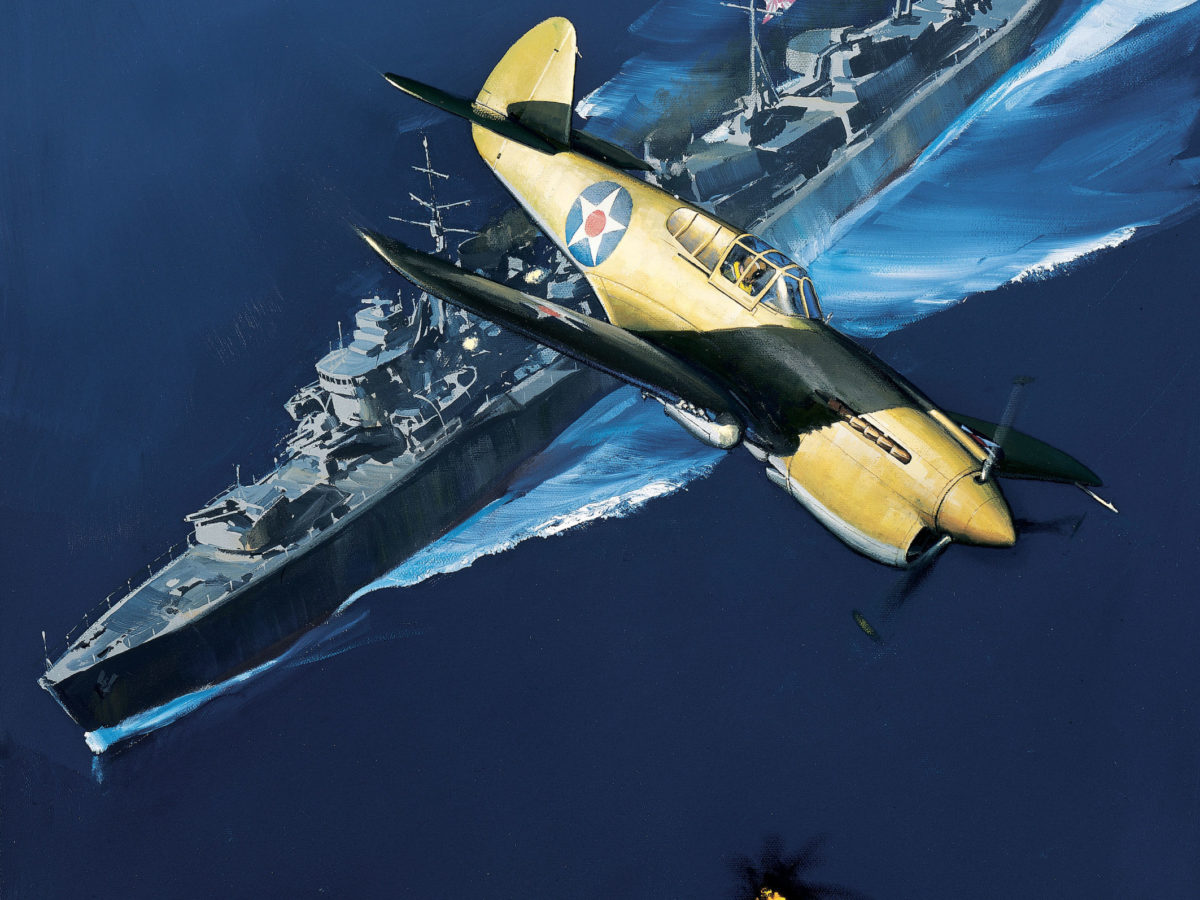The oft-repeated truism that America was ill-prepared for World War II manifested itself starkly at Pearl Harbor in the early morning hours of December 7, 1941. During the surprise attack launched from Japanese aircraft carriers, barely a glove was laid on the enemy airplanes while 18 U.S. vessels were either sunk or run aground, including five battleships. No less than 347 U.S. Army and Navy aircraft were destroyed or damaged. The American death toll was 2,403.
Japan’s rampage continued at strategic locations across the Pacific in the days that followed. Indeed, the very next day, the Japanese attacked Clark Field, the American air base about 40 miles northwest of Manila in the Philippines. Despite advance warning of the outbreak of hostilities, 18 B-17 Flying Fortresses were destroyed on the ground. Fortuitously, other B-17s had been dispersed elsewhere in the Philippines at the time.
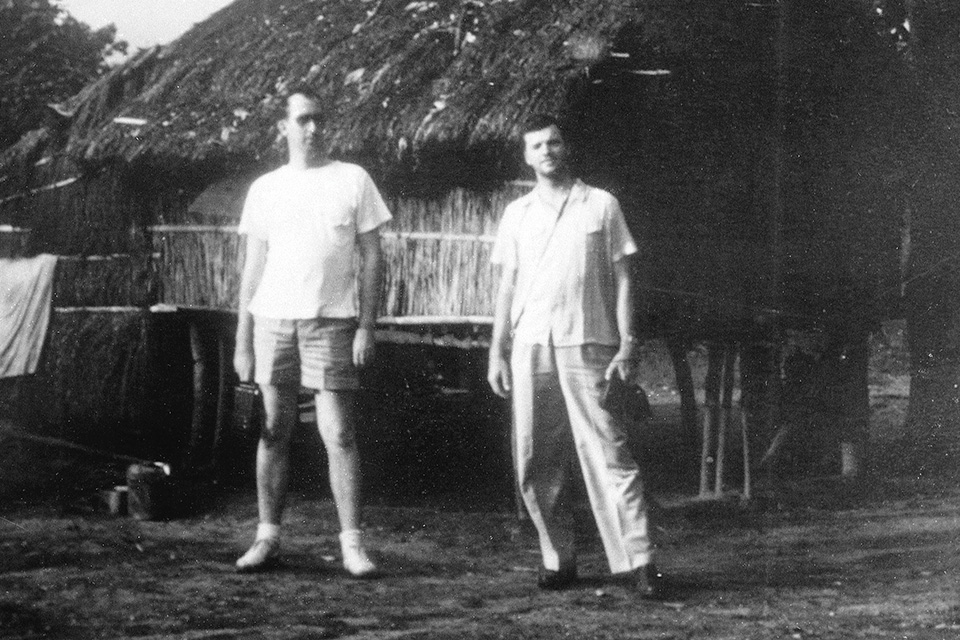
B-17s of the 19th Bombardment Group’s 14th Squadron were at Del Monte Field on Mindanao, 600 miles south of Clark. One of the unit’s pilots, Captain Colin Purdie Kelly Jr., was a highly regarded 26-year-old West Point graduate and former B-17 instructor. He and his squadron mates were hopelessly outnumbered and outmatched by the Japanese forces but would soon begin striking back.
On December 9 the squadron’s commander, Major Emmett “Rosie” O’Donnell, led a small contingent of B-17s to a barebones airstrip closer to Clark. By some accounts this was San Marcelino Airfield in Zambales province, but by another telling it was Mariveles Airfield in the adjoining province of Bataan. Regardless, conditions were austere, food had to be flown in and the crews slept that night in their bombers or under the wings.
Before sunrise on the rainy morning of December 10, Major O’Donnell flew into Clark to obtain orders. He radioed his men to join up with him at the crack of dawn—the bombers were going on the offensive. At Clark they would take on bombs and receive targeting instructions.
Three of the squadron’s already obsolescent B-17s were cleared into Clark. One of these early-model shark-finned Flying Fortresses, a B-17C, was commanded by Captain Kelly. During fueling and bombing-up, an air raid alarm sounded, forcing Kelly and his crew to depart with only three 600-pound bombs instead of the standard complement of eight. The other two B-17s soon followed them into the air.
Kelly had received orders to locate and attack a reported Japanese aircraft carrier in Philippine coastal waters. The search was focused in the vicinity of Aparri on the northern coast of Luzon. While passing near Aparri, the B-17C’s crew observed a Japanese landing force coming ashore, supported by a flotilla of ships firing a barrage against coastal defenses.
Perceiving the landing force as the more immediate threat, Kelly had his radio operator/gunner, Private Robert Altman, contact Clark Field for permission to deviate from orders and instead strike this target of opportunity. When the radio responses essentially put the question on hold, Kelly got tired of waiting. He advised his crew that they were going to target the largest vessel below, which he believed to be a battleship.
The captain flew a couple high-altitude practice bomb runs for the sake of his bombardier, Sergeant Meyer Levin. On the actual run at 22,000 feet, Kelly gave instructions to release their precious three bombs in train rather than as a cluster. The first and second fell short and alongside the ship, while the third bomb was believed to have struck its starboard side. It was one of the first offensive salvos against the Japanese since the attack on Pearl Harbor three days earlier and the crewmen, seeing what they perceived as a plume of smoke rise from their target in addition to trails of oil in the water, were elated at their apparent success.
Kelly wasted no time turning his B-17 toward Clark Field in an effort to make it back before being detected. However, A6M2 Zero pilots of the Tainan Kokutai (naval air group) who had been providing air cover for the disembarking troops and their ships looked up from 18,000 feet and saw the solitary bomber that had just targeted the fleet. Some two dozen Zeros gave chase.
One of the pursuers was famed ace Saburo Sakai, who later wrote that he was shocked the B-17 had penetrated the convoy’s extensive fighter screen and that it was alone and unescorted. Referring to Kelly, the ace opined, “The pilot certainly did not lack courage.”

The Flying Fortress, which enjoyed a speed advantage as long as it operated at the higher altitude, stayed safely out of firing range of the pack of Zeros pursuing from Aparri. Suddenly, though, three Zeros from another fighter wing unexpectedly came on the scene from above and ahead after having strafed Nichols Field south of Manila. According to Sakai, who witnessed events from behind the fleeing American plane, these fighters “sliced across the B-17’s course” but were unable to maneuver effectively due to the thin air at the high altitude, and “the bomber continued serenely on, almost as if the Zeros were no more bothersome than gnats.”
Frustrated, the three errant Zeros joined up with seven from the main pack. Together they formed a single line to the bomber’s rear and fired at the elusive plane one at a time. This tactic, amid a steady stream of defensive fire from the B-17’s waist guns and belly-mounted “bathtub” turret, also proved unavailing. The airborne encounter with the new-on-scene American bomber reportedly threw the fighter pilots off their game, as the B-17’s size made scale and distance hard to estimate.
GET HISTORY’S GREATEST TALES—RIGHT IN YOUR INBOX
Subscribe to our Historynet Now! newsletter for the best of the past, delivered every Wednesday.
The combat dynamic changed when the Flying Fortress started to descend for landing at Clark Field. Sakai zoomed in from behind and below with a Zero on each wing. The absence of a tail gunner’s position in the B-17C created a hole in the bomber’s cone of fire and gave the pursuers an opening. With guns blazing, the ace kept shooting at the big bomber until “pieces of metal flew off in chunks.” Out of ammunition, he peeled off to make room for the first of his two wingmen, who pressed the attack. Before the second wingman began to fire, “the damage was already done” and the bomber nosed forlornly earthward, albeit with wings level.
Inside the B-17’s tight working spaces, the crew frantically attempted to cope with the rapidly unfolding mayhem. The first rounds had torn through the length of the fuselage, instantly decapitating Tech. Sgt. William Delehanty, the left waist gunner. Staff Sergeant Jim Halkyard, the right waist gunner, had moments before handed Delehanty a lit cigarette and narrowly escaped the same fate as the shells whizzed by.
A cascade of hot lead had slammed into the flight deck, knocking out most of the instruments. Additional rounds hit the radio compartment’s oxygen bottles, causing them to explode and wounding radioman Altman. The bomber got to within five miles of Clark, but by then the port wing was on fire and flames spread to the cockpit, engulfing it in smoke. Flames also streamed from the bomb bay and the elevator control cables had been severed.
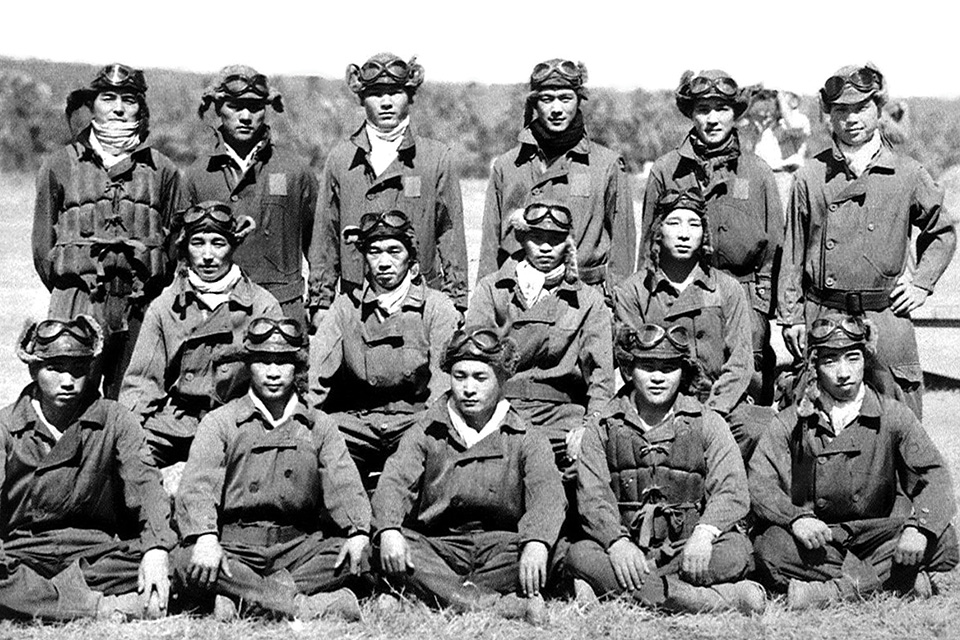
Kelly had his hands full just keeping the B-17 steady as he ordered his crew to abandon the fiery plane. Halkyard and Altman, along with Private Willard Money, the assistant radio operator, pushed against the aft hatch to evacuate, pulling their ripcords as soon as they cleared the doomed aircraft. Meanwhile, navigator 2nd Lt. Joe Bean and bombardier Levin sought to exit via the bottom hatch, only to find it was stuck, likely from corrosion caused by months-long exposure to humidity and salty air. The two men struggled to break the hatch open, succeeding in the nick of time. As soon as they broke free and jumped from the burning plane, it exploded.
At Clark Field, air and ground crews counted the parachutes that popped open one after the other until six canopies floated earthward. The last was that of Kelly’s copilot, 2nd Lt. Donald Robins, who had reached the upper escape hatch just as the severely crippled ship ignited in a fireball, at once badly burning him and propelling him away from the airborne inferno. Kelly went down in flames, having stayed at the controls to keep the mortally damaged bomber as stable as possible during the bailouts.
Recommended for you
Sakai had dived in parallel with the ill-fated bomber as it hurtled toward the ground, keeping a distance of several hundred yards. He observed the first three crewmen bail out at 7,000 feet and then the B-17 dipped into a cloudbank, causing him to lose visual contact. About that time, he said, “I remember having a feeling of tremendous respect for the pilot, who had ordered his crew to escape while he was apparently attempting to save his aircraft.” None of the Japanese pilots saw the B-17 explode or impact the ground, so for the time being they were denied credit for the kill.
Kelly’s B-17C was the first Flying Fortress lost on an offensive mission against the Japanese, and the sacrifice of its commander became a source of inspiration for a U.S. population looking for positive news from the bleak Far East war front. Press dispatches reported that the bomber had sunk the Japanese battleship Haruna. In the passion of the moment, as Americans yearned to find a hero in the desperate days following Pearl Harbor, there were even reports that Kelly had deliberately dived his plane “down the funnels” of the enemy vessel.
Subsequent information revealed that Haruna was not even in the engagement and that the ship Kelly had likely targeted was the heavy cruiser Ashigara, which was not damaged. However, the 648-ton minesweeper W-19 was hit, run aground by its crew and later written off as a total loss. In addition, the 5,000-ton light cruiser Natori went to W-19’s aid and was damaged by a near miss, as were two troop transports.
The other two Flying Fortresses from Clark Field had each made their own lone attacks minutes after Kelly departed the scene. A B-17D piloted by 1st Lt. George Schaetzel dropped its bombs from 25,000 feet and reported no hits. Schaetzel’s bomber was attacked by Nakajima Ki-27 army fighters and one engine was shot out, but he managed to bring his plane back to San Marcelino with his crew uninjured. Another B-17D, piloted by 1st Lt. Guilford R. Montgomery, reached Aparri and dropped its bombs, claiming to have left an enemy ship burning. On the way back to base, however, Montgomery encountered bad weather and ran out of fuel, forcing him to ditch in the sea off Zamboanga. He and his crew were unhurt and subsequently rescued.
In spite of the damage the Flying Fortresses had managed to inflict, Sakai went so far in his postwar memoir to state that from his vantage point it appeared all three bombs dropped by Kelly’s B-17 fell harmlessly into the sea. Regardless, the actions of the captain and his crew were no less heroic for together these men had pressed the attack against tremendous odds. And, once the bomber had been irreparably stricken, Kelly’s selflessness allowed his surviving crewmates to escape.
In the wave of patriotic fervor that swept across the country following Pearl Harbor, Americans latched onto the iconography of one of their fellow citizens making the ultimate sacrifice so that others might live. Many believed that this courageous pilot had earned the Medal of Honor, as had been erroneously reported by some media outlets. Indeed, Maj. Gen. Lewis H. Brereton, commander of the Far East Air Forces, recommended Kelly for the nation’s highest military honor.
But General Douglas MacArthur, commander of all U.S. Army forces in the Far East, was swayed by his headquarters staff, who felt the circumstances warranted the military’s second highest decoration. Accordingly, Kelly was posthumously awarded the Distinguished Service Cross. The fallen pilot was also awarded the Distinguished Flying Cross for his successful over-water navigation in a flight of nine B-17s from Wake Island to the Philippines three months before America entered the war.
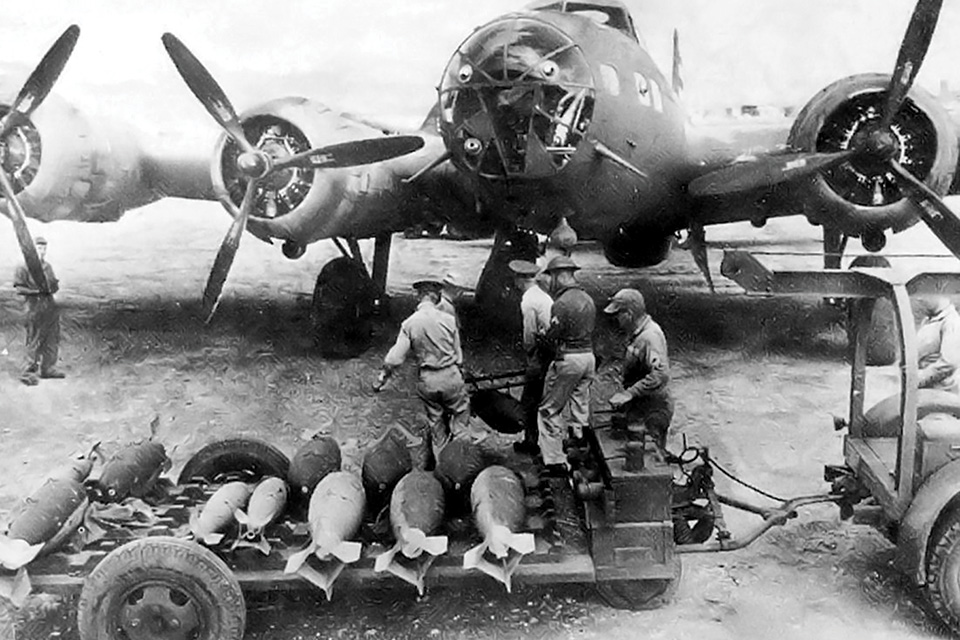
When word of the heroic act in Philippine skies reached the small northern Florida town of Madison, where Kelly had grown up, the Tampa Tribune sponsored the establishment of a charitable fund to benefit his 19-month-old son, nicknamed “Corky.” The day after Christmas, Kelly’s widow, Marion Wick Kelly, sent a letter of thanks to the newspaper’s editor, stating that the “Corky Kelly fund…is one of the finest tributes one could pay my husband.”
A week after the mission, by historical happenstance the 39th anniversary of the Wright brothers’ first successful powered flight, President Franklin D. Roosevelt issued a letter “as an act of faith in the destiny of our country” addressed “To the President of the United States of America in 1956” requesting that Kelly’s son be appointed to his late father’s alma mater, the U.S. Military Academy. That future president was Dwight D. Eisenhower, himself a hero of the war and a West Point graduate. In 1959 President Eisenhower honored the request, and four years later Colin P. Kelly III—once the little boy known as Corky—graduated from the academy.
Colin Kelly III eventually became a priest and transferred from the armored corps to the chaplaincy, returning to West Point as its assistant chaplain. He concluded his military service as a lieutenant colonel and then served as pastor of Trinity on the Hill Episcopal Church in Los Alamos, N.M., not far from the government laboratory whose development of the atomic bomb brought a definitive end to the war that had been marked at its beginning by his father’s martyrdom.
On May 23, 1987, in conjunction with the 50th anniversary of the graduation of the West Point Class of 1937, a bust of Captain Kelly was unveiled in the Regimental Room of the Cadet Mess Hall. On hand were the deceased captain’s son and grandson, Colin Brent Kelly. The ceremony’s attendees were reminded that the academy’s 1937 yearbook, the Howitzer, had prophetically described the future representative of America’s righteous wartime defiance as having “a temper, perhaps, but one that rises to defend the principles that he cherishes.”
As to the fate of Kelly’s six surviving crewmates, radio operator/gunner Bob Altman was taken prisoner and survived. Copilot Don Robins, seriously injured in the bailout, was hospitalized and later died. Bombardier Meyer Levin went on to fly as many missions as he could wrangle, earning the Silver Star but losing his life in January 1943 when his B-17F ran out of fuel and ditched in the Gulf of Papua off the southern coast of New Guinea.
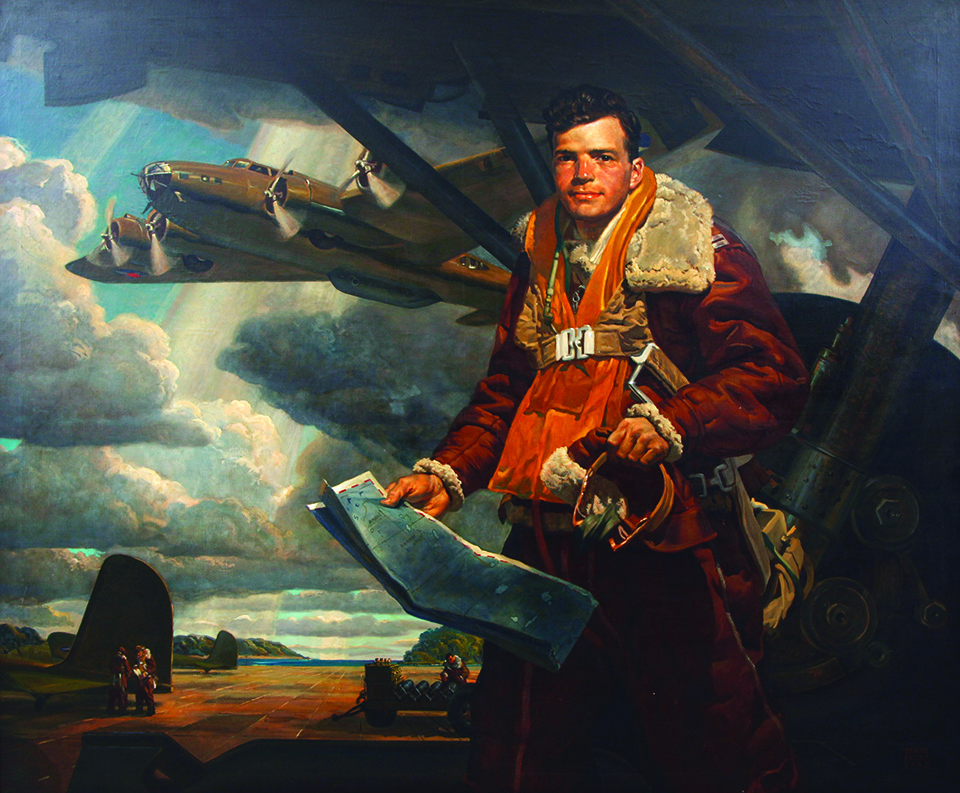
Gunner Jim Halkyard joined the Filipino guerrillas but was evacuated for medical reasons and made a career of the Air Force. Radioman Willard Money operated a weather radio station on Mindanao with the guerrillas until the island was liberated, then left the Air Force but reenlisted and rose to the rank of lieutenant colonel. Navigator Joe Bean continued flying bomber missions in the Southwest Pacific, staying in the postwar Air Force and, like Money, becoming a lieutenant colonel.
One of the things the crew members had in common was unreserved esteem for their former commander. As Bean succinctly put it, “His crew thought highly of him.”
The USAF’s most public consecration of Kelly today is through the display of the life-size portrait that hangs at the entrance to the World War II Gallery at the National Museum of the U.S. Air Force in Dayton, Ohio. Completed in 1942 by Yale University art professor Deane Keller, who subsequently enlisted in the Army himself, the painting is an unabashedly glowing celebration of wartime gallantry and a paean to a heroic combatant.
Looking more mature than his years, Kelly stands under the imposing structure of his mighty bomber, ready for the mission and the fate that awaits him. He wears a classic shearling-lined brown leather flight jacket with matching leggings to fend off the biting cold at altitude. He is shown holding the tools of his trade: an aeronautical chart in one hand and headphones in the other. Tucked underneath the chest strap of his seat-pack parachute is a “Mae West” life preserver.
The telltale fins of early-model B-17s are visible on an airfield in the background. A few squadron mates can be seen preparing for takeoff and an armorer stands at the ready with a bomb-laden cart. In the prominent sky, clouds compete with shafts of light as a big Flying Fortress barrels by with propellers whirling. When you look up at this period painting on your way into the cavernous hall immortalizing the machines and airmen who won the world’s most consequential air war, you see a determined captain who exemplifies the sacrifices of his generation.
The legend of Colin Kelly ran deep—the early WWII hero was an exemplar for American bomber pilots and air crewmen. Though not mentioned by name, he was surely among those “great captains” General MacArthur referenced in his famous 1962 farewell address to the Corps of Cadets at West Point, one of “a million ghosts” in the long gray line who would rise up from their graves if subsequent graduates began to falter, “thundering those magic words: Duty, Honor, Country.”
Longtime pilot and aviation historian Philip Handleman’s most recent book (with Lt. Col. Harry T. Stewart Jr.) is Soaring to Glory: A Tuskegee Airman’s Firsthand Account of World War II. Further reading: The Legend of Colin Kelly: America’s First Hero of WW II, by Dennis E. McClendon and Wallace F. Richards; Samurai!, by Saburo Sakai with Martin Caidin and Fred Saito; and Bloody Shambles, Vol. 1, by Christopher Shores and Brian Cull with Yasuho Izawa.
This feature originally appeared in the January 2022 issue of Aviation History. Don’t miss an issue, subscribe today!

